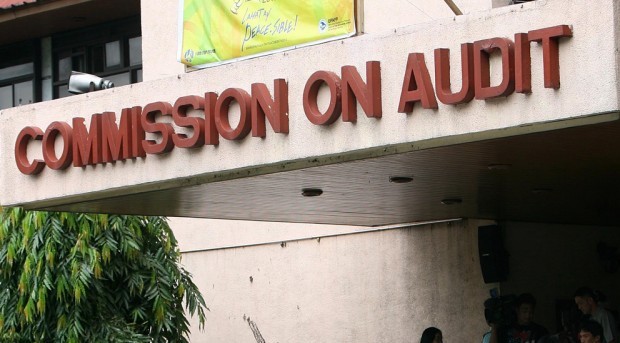
The Commission on Audit (File photo from the Philippine Daily Inquirer0
The Commission on Audit has recommended that the Department of Social Welfare and Development (DSWD) maintain its suspension of the expansion of the government’s conditional cash transfers program until the leakages in the system are plugged.
In its Performance Audit Report on the Pantawid Pamilyang Pilipino Program (4Ps), COA said DSWD should upgrade its information technology systems and identify ineligible beneficiaries first before accepting new households into the program.
Since 4Ps would head into its 10th year in 2018, COA also said DSWD should conduct a proper impact evaluation to really see how the program helped households break out of poverty.
Citing the National Household Assessment in 2015, the report noted that of 4,402,253 registered families, 1,315,477, or 30 percent, are now considered to be the above the poverty line but continue to receive benefits from the DSWD.
This was close to the 35 percent leakage rate reported by the World Bank.
“Failure to validate and update the list of poor households prolongs this possible leak,” the COA said.
COA blamed the rapid expansion of 4Ps under the Aquino administration for worsening the problems with the program’s individual household targeting and information technology systems.
Errors brought about by poor data gathering during the 2009 National Household Assessment were not corrected right away, because the Aquino administration “had insufficient time and personnel… because its priority was on mass registration.”
The 4Ps only shifted its focus to data correction in 2015.
COA noted that during the program’s expansion, it had inadequate IT support since the system could only handle 300,000 households.
Subsequent data cleansing efforts by DSWD revealed the existence of 15,898 duplicate entries as of May 2017, mostly from the Autonomous Region in Muslim Mindanao.
“The existence of duplicates in the database led to the unauthorized release of grants amounting to about P335,485,000.00,” COA said.
No link yet between 4Ps, poverty reduction
COA also said there was a lack of evidence to see if 4Ps directly caused the decline in the poverty rate and contributed to the goal of breaking the “inter-generational cycle of poverty.”
It said the government would need longer-term data to really see if 4Ps really made a difference in getting its beneficiaries out of poverty.
The cash grants act as incentives for the poorest families to keep their children to school and ensure compliance with regular medical check-ups, immunization and deworming programs.
But, COA said the evidence only showed the beneficiaries were encouraged to avail of the government’s education and health services.
This did not prove that the services actually kept the children healthy or ensured they will be properly equipped with the skills to pursue higher studies or secure stable jobs, it said.
“Increased access to basic health and education services of the government does not automatically translate to better health and jobs for the beneficiaries,” the report noted.
The decline in the poverty incidence in 2015 cannot be attributed to 4Ps because the program only produced its first batch of graduates that year and only 333,673 graduated from high school, compared to the 1.3-million households that moved above the poverty line.
“With only 333,673 graduates, most transitioning beneficiaries are likely out of the poverty line due to factors other than 4Ps,” the report noted.
Likewise, it noted that the maximum cash grant of P2,600 per month could not have been enough to lift the beneficiaries above the poverty line, which was P9,140.83 per month for a family of five as of the first half of 2015.
“An addition of approximately P87.00 per day for 30 days would not be enough to lift a family out of the poverty line,” the report pointed out.
Moreover, COA said DSWD was unable to “maximize the possible gains” of the schooling program and noted that “program monitoring does not include quality of education as one of its indicators.”
As for the health care aspect, DSWD commissioned the Social Weather Stations to conduct spot check reports.
However, SWS found that among surveyed children below six years old, 11 percent were underweight in 2011, which increased to 12 percent in 2012 and 14 percent in 2017.
Similarly underwhelming results were seen when it comes to the number of live births in hospitals (56 percent of mothers gave birth at home, according to a 2016 spot check), as well as compliance with deworming programs.
The COA report cited the Philippine Survey and Research Center’s findings that beneficiaries were unaware of the program’s basic conditions and lacked proper orientation.
Some also struggled to comply with the health requirements because of scheduling conflicts arising from the need to juggle multiple odd jobs.
Budget for the 4Ps from 2008 to 2017 has cost the government P385.982 billion partly funded by a $450 million loan from the World Bank. The biggest allocation was set in this year’s budget at P78.19 billion.
Around 90 percent of the budget goes to the cash grants, while the remainder is spent on administrative costs including salaries of program personnel, monitoring and evaluation, and payment of service fees to the payment conduits. /atm

